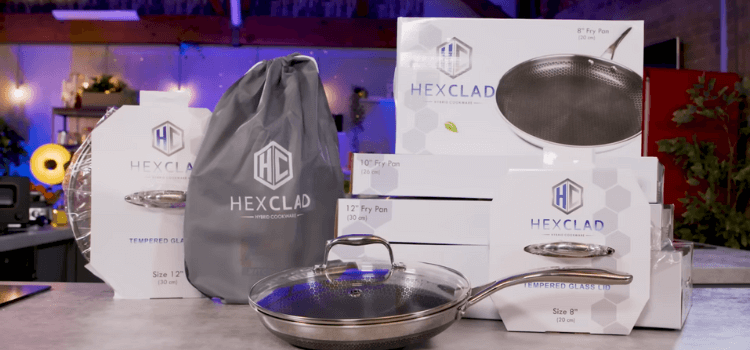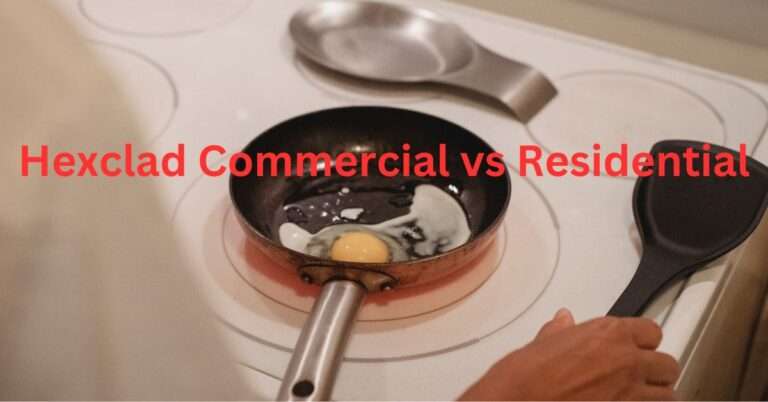Fissler vs All-Clad: Which Cookware Is the Best?
Last updated on November 19th, 2025
If you’re shopping for high-end stainless steel cookware, two names dominate the conversation: Fissler and All-Clad. Both brands are trusted by home chefs and professionals alike, but they offer distinct differences in design, performance, and value.
In this in-depth comparison, we’ll break down everything you need to know about Fissler vs All-Clad, including materials, build quality, cooking performance, ease of use, price, and which one is the better fit for your kitchen.
Quick Comparison Table: Fissler vs All-Clad
| Feature | Fissler Original-Profi / M5 | All-Clad D3 / D5 |
| Material | 5-ply stainless steel | 3-ply or 5-ply stainless steel |
| Country of Origin | Germany | USA |
| Oven-Safe Temperature | Up to 500°F (260°C) | Up to 600°F (315°C) |
| Handle Design | Rivetless, ergonomic | Riveted, straight or contoured |
| Dishwasher Safe | Yes | Yes |
| Induction Compatible | Yes | Yes |
| Price (10-piece set) | $1,000 – $1,200 | $700 – $1,000 |
| Warranty | Limited Lifetime | Limited Lifetime |
Brand Overview

About Fissler
Let’s start with Fissler. This brand has been crafting cookware in Germany since way back in 1845. That’s nearly two centuries of experience—pretty impressive, right?
Fissler is best known for its Original-Profi and M5 collections, which use 5-ply stainless steel. What does that mean for you? Great heat distribution and seriously tough pans. If you’ve ever cooked with a pan that had hot spots, you’ll appreciate how evenly these heat up—no more burnt onions in one corner and raw ones in the other.
One standout feature? Rivetless interiors. That means no screws or bolts where food can get stuck. Cleanup is much easier—just a quick swipe and you’re done. It’s a small design detail that makes a big difference, especially if you cook often.
And yes, these pans are heavy. But that weight gives them durability and stability on any stovetop, even induction. Fissler is definitely aimed at cooks who want premium, long-lasting tools in their kitchen.

About All-Clad
Now let’s talk about All-Clad. This is an American brand, founded in Pennsylvania in 1971, and it’s become something of a legend in the cookware world.
All-Clad is famous for pioneering bonded stainless steel cookware in the U.S. What’s that? It’s the process of layering different metals—like stainless steel and aluminum—to get the best of both worlds: durability and fast, even heating.
The D3 (3-ply) and D5 (5-ply) lines are the most popular. D3 is lighter and heats up quickly, which is great if you’re the kind of cook who likes to sear, sauté, or stir-fry on the fly. D5 gives you a little more thickness and heat retention—perfect for simmering sauces or slow cooking stews.
All-Clad pans are made in the USA, which many home cooks love for quality and supporting local manufacturing. One quirk: the handles. Some people love their iconic straight design, others—not so much. If you’re unsure, try holding one before you buy.
In short, All-Clad is all about reliable performance, clean looks, and heritage. It’s the kind of cookware that lasts for decades (and yes, people do pass it down to their kids).
Performance Comparison
Heat Conductivity
Both Fissler and All-Clad use layers of metal to help their cookware heat up evenly—but they do it a bit differently.
- All-Clad D3 uses a 3-ply design: stainless steel on the outside with an aluminum core in the middle. That aluminum heats up fast and reacts quickly to changes in temperature. Great if you’re sautéing veggies or searing steak and want instant control.
- Fissler, on the other hand, uses a thicker 5-ply construction. It takes a bit longer to heat, but once it’s hot, it stays hot. That’s helpful when simmering sauces or browning meat evenly.
🥇 Winner: All-Clad for quick, responsive heating. Fissler for steady, retained heat—ideal for slow, even cooking.
Tip: If you’re the type who multitasks while cooking, Fissler’s heat retention can save your dinner from cold spots.
Cooking Surface
Here’s where Fissler really shines. The inside of a Fissler pan is rivet-free, which means there are no bumps or crevices where food and grease can hide. It’s also satin-polished, so it’s smooth and easy to clean.
All-Clad pans have riveted handles, and while those rivets are secure, they can collect grime over time. You’ll need a brush to get around them.
🧽 Winner: Fissler—for a cleaner, sleeker cooking surface.
Real Example: Scrambling eggs in a Fissler feels less sticky, especially if you preheat and use a bit of oil. Cleanup takes under a minute.
Oven and Dishwasher Use
Good news: both Fissler and All-Clad are oven- and dishwasher-safe.
- All-Clad takes the lead in oven safety, withstanding temps up to 600°F (315°C).
- Fissler handles up to 500°F (260°C), which is still plenty for most baked dishes.
🔥 Winner: All-Clad, but only if you’re cooking at super high temps like oven-seared steaks or broiled dishes.
Tip: Either brand can go from stovetop to oven for things like skillet lasagna or baked frittatas.
Induction Compatibility
Both brands are fully compatible with induction cooktops. No special pans needed here.
They use magnetic stainless steel bases, so if you’ve got an induction range or portable burner, you’re good to go.
💡 Winner: Tie
Pro Tip: If you’re building a future-proof kitchen, make sure your cookware is induction-ready. Both Fissler and All-Clad check that box.
Read More: is Aluminium Cookware Ban in Europe – What the Rules Really Say (2025)
Design & Comfort
Handle Comfort
Let’s talk about handles—because if a pan feels awkward in your hand, it won’t matter how well it cooks.
Fissler goes the extra mile here. Their handles are rounded, ergonomic, and rivet-free. That means no sharp edges digging into your palm and no food bits getting stuck around rivets. Plus, they stay cool on the stovetop, so you don’t need to constantly reach for a potholder. If you do a lot of simmering or sautéing, your wrists will thank you.
All-Clad, on the other hand, has what many call the “signature” handle—especially on their D3 line. It’s straight, a bit narrow, and has that U-shaped underside. Some cooks love the control it gives, especially when tilting or pouring. But others find it uncomfortable, even downright awkward, especially if you’re using the pan for more than a few minutes.
💡 Pro Tip: If you’re set on All-Clad but dislike the straight handle, try the D5 or Copper Core lines—they offer more rounded, comfortable options.
Winner: Fissler, hands down, for comfort and clean, thoughtful design.
Lids
Now for the often-overlooked hero of cookware: the lid.
Fissler’s stainless steel lids fit like a glove. They form a tight seal, which is great for locking in steam, moisture, and flavor. If you’re into braising, simmering, or even low-and-slow cooking, this matters a lot. You’ll notice fewer spills and more evenly cooked food.
All-Clad’s lids are durable and get the job done, but they’re a bit more basic. They don’t seal quite as tightly, so steam can sneak out around the edges. Not a dealbreaker for everyday cooking, but something to keep in mind if you do lots of liquid-based dishes.
🥘 Use Case: Making rice or risotto? Fissler’s snug-fitting lid helps prevent excess evaporation, so your grains cook more evenly.
Winner: Fissler again, especially for moisture-sensitive recipes.
Read More: Best Korean Cookware Brands
Price & Value
Let’s be honest—neither Fissler nor All-Clad is cheap. These are premium cookware brands. But when you’re investing in pots and pans that’ll last decades, price is only part of the story.
All-Clad: Better Value for Most
If you’re on a budget or building your first serious cookware set, All-Clad D3 offers excellent value. A 10-piece set usually costs around $700–$900. That’s still a chunk of change, but you’re getting USA-made, high-performance cookware used in home and professional kitchens alike.
All-Clad’s pricing is more flexible too. You can often find deals, factory seconds, or individual pieces on sale—especially through their official seconds shop. It’s a great way to build a quality set over time without breaking the bank.
Fissler: Premium Price, Premium Features
Fissler cookware, especially the Original-Profi Collection, usually runs $1,000 or more for a 10-piece set. The newer M5 line is slightly more affordable, but it’s still a premium investment.
What are you paying for? German engineering, thicker walls, rivet-free design, and a level of detail that feels luxurious. If you want cookware that looks as good as it cooks—and plan to use it for decades—Fissler is worth the splurge.
💡 Tip: Fissler rarely goes on sale in the U.S., so if you see a good price, jump on it.
Which Offers More Bang for Your Buck?
If you’re a home cook looking for long-term value and everyday performance, All-Clad D3 or D5 gives you more for less. But if you’re after ultimate durability, comfort, and sleek design, Fissler delivers—and then some.
Winner: All-Clad wins on price and overall value, especially for first-time buyers or budget-conscious shoppers.
Pros & Cons
Fissler
Pros
- Beautiful, German craftsmanship
- Rivet-free interior = easier cleaning
- Excellent lid design
- Heirloom-quality build
Cons
- Higher price tag
- Heavier weight
All-Clad
Pros
- Proven performance and reliability
- Made in USA
- More affordable
- Available in various lines (D3, D5, Copper Core)
Cons
- Riveted handles harder to clean
- Handle comfort varies by line
Care and Maintenance of Fissler vs All-Clad
Taking good care of your cookware means it will last longer and perform better. Both Fissler and All-Clad make durable stainless steel pans, but a little TLC goes a long way.
Cleaning Tips
- Fissler’s rivet-free interior makes cleaning easier. You won’t have to scrub around pesky rivets where food can hide. Use warm, soapy water and a soft sponge. For stubborn spots, a gentle scrubber works great.
- All-Clad pans have rivets, so take extra care cleaning around them. Use a soft brush or sponge to get food out of those tiny spaces. Avoid steel wool—it can scratch the surface.
Dishwasher Use
Both brands say their cookware is dishwasher safe, but hand washing is best if you want to keep that shiny finish longer. The dishwasher’s harsh detergents can dull the shine over time.
Avoiding Stains and Discoloration
With stainless steel, you might see some rainbow-colored stains or heat marks after cooking. No worries—just make a paste of baking soda and water, gently rub it on, then rinse. This works well for both Fissler and All-Clad.
Handling Heat
Avoid overheating empty pans; it can cause discoloration and warp the metal. Both brands handle high heat well, but give your pan a little oil or butter before heating—that also helps protect the surface and prevents sticking.
Storage Tips
Store your pans carefully to avoid scratches. Use pan protectors or place a soft cloth between stacked pots and pans.
🧽 Pro Tip: If food sticks stubbornly, soak the pan in warm soapy water for 15-20 minutes before washing. It softens residue and makes cleaning easier.
With proper care, your Fissler or All-Clad cookware can stay beautiful and functional for decades. Treat them well—they’re worth it!
Read More: Masterclass Cookware Review: Buying Guide
Customer feedback of Fissler vs. all-clad
Customers often compare the two well-known cookware manufacturers, Fissler and All-Clad. While All-Clad is renowned for its sturdy and adaptable cookware, Fissler is recognized for its top-notch German engineering. Both companies have devoted client bases, and their comments may provide potential customers with valuable information.
Fissler Customer Feedback
Fissler cookware is highly regarded for its outstanding heat distribution and durability by customers. They discover that Fissler cookware heats up rapidly and uniformly, enabling precision cooking. Fissler cookware is also known for its highly regarded nonstick surfaces, which make cleanup simple.
All-Clad Customer Feedback
Customers who have used All-Clad cookware, on the other hand, value its improved heat retention and longevity. They discovered that All-Clad pans effectively retain heat, which is particularly advantageous for activities like searing and browning. All-Clad cookware is made of stainless steel, which is renowned for its strength and resistance to warping.
You may read related article on HEXCLAD VS LE CREUSET: BATTLE OF THE PREMIUM COOKWARE
Which Should You Buy?
Still can’t decide between Fissler and All-Clad? Let’s break it down by what really matters—how you cook, what you value, and how much you’re ready to spend.
Choose Fissler if:
- You love that sleek German engineering and clean, modern design.
- You’re tired of scrubbing around rivets. Fissler’s rivetless interiors are easier to clean and look beautiful.
- You want cookware that feels luxurious, with thicker walls, comfortable handles, and tightly sealing lids.
- You don’t mind paying more for top-tier performance and long-term durability.
🧑🍳 Real Tip: If you cook large meals, Fissler’s weight and heat retention are a huge bonus—it holds temperature steady even when you add cold ingredients.
Choose All-Clad if:
- You want American-made stainless steel cookware that’s trusted in kitchens everywhere.
- You’re looking for high-quality pans at a more affordable price.
- You like options—All-Clad offers several lines like D3, D5, and even Copper Core, so you can pick what fits your style and budget.
- You don’t mind the rivets and can live with the quirky handle design (or just use silicone grips).
💡 Budget Tip: All-Clad’s D3 line is a fantastic entry point—it gives you pro-level performance without going over $1,000.
Still not sure?
Here’s a simple test:
- If form and function matter equally to you, go with Fissler.
- If you care more about price and proven performance, stick with All-Clad.
🛒 Either way, you’re making a solid investment. Both brands offer lifetime warranties, so these are pans you’ll use for decades.
Conclusion
So, Fissler vs All-Clad—which one takes the crown? Honestly, both are excellent. It really depends on your cooking style, budget, and what you value most.
If you want luxury cookware with a sleek look, rivet-free cleaning, and excellent heat retention, Fissler is worth every penny. It feels premium and performs beautifully, especially for slow cooking.
But if you’re after high-quality stainless steel cookware that’s made in the USA and doesn’t break the bank, All-Clad is the smarter pick. It’s a favorite for a reason—lightweight, fast-heating, and built to last.
Whichever you choose, you’re getting cookware that can last a lifetime. Just be sure to match the brand to your kitchen needs—not just the label.
🧑🍳 Happy cooking, and may your pans always sizzle just right!
Frequently Asked Questions
Is Fissler better than All-Clad?
It depends on what you’re looking for. Fissler cookware feels more premium, with thicker construction and a sleek, rivet-free design. But All-Clad offers excellent performance at a lower price. For most home cooks, All-Clad hits the sweet spot between quality and value.
Are Fissler pans non-stick?
No, they are stainless steel, not non-stick. But if you preheat the pan properly and use enough oil or butter, food won’t stick much. Tip: wait until your food naturally releases before flipping—it helps prevent sticking.
Is All-Clad made in the USA?
Yes! All-Clad’s D3, D5, and Copper Core lines are made in Canonsburg, Pennsylvania. Some accessories or lids may be made elsewhere, but their core products are American-made.
What’s the difference between All-Clad D3 and D5?
The D3 line has three layers: stainless-aluminum-stainless. It heats up quickly and is lighter.
The D5 line has five layers, including more stainless steel. It retains heat better and cooks more evenly—great for slow, steady cooking.
Can I use both brands on induction cooktops?
Absolutely. Both Fissler and All-Clad cookware are induction-compatible. Their stainless steel base is magnetic and works perfectly on induction stoves.
Are the handles comfortable to hold?
Fissler wins here. Its ergonomic, rivet-free handles feel natural and don’t dig into your hand. All-Clad handles, especially the straight ones on the D3 line, are less comfortable for some people—but you might get used to them.







